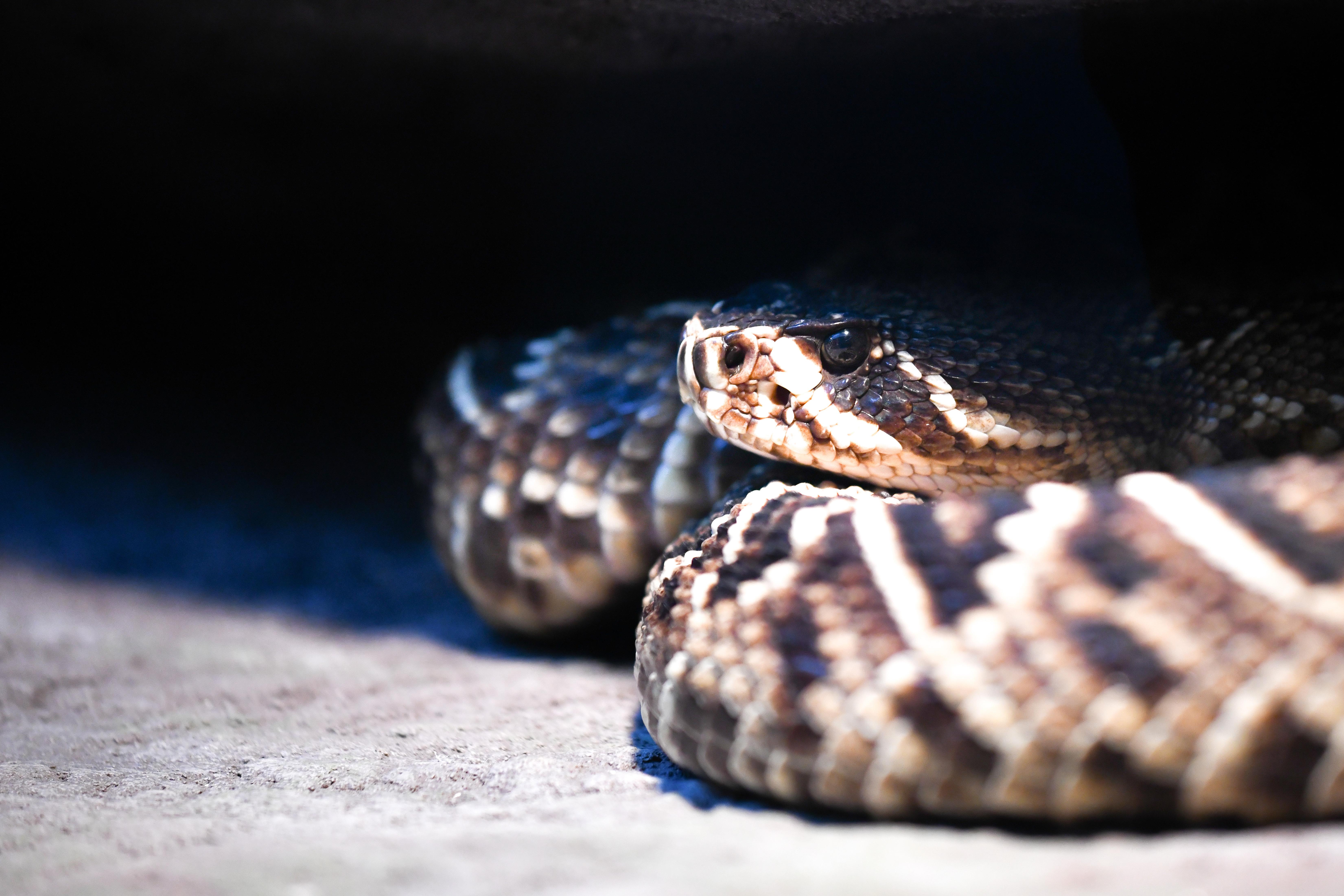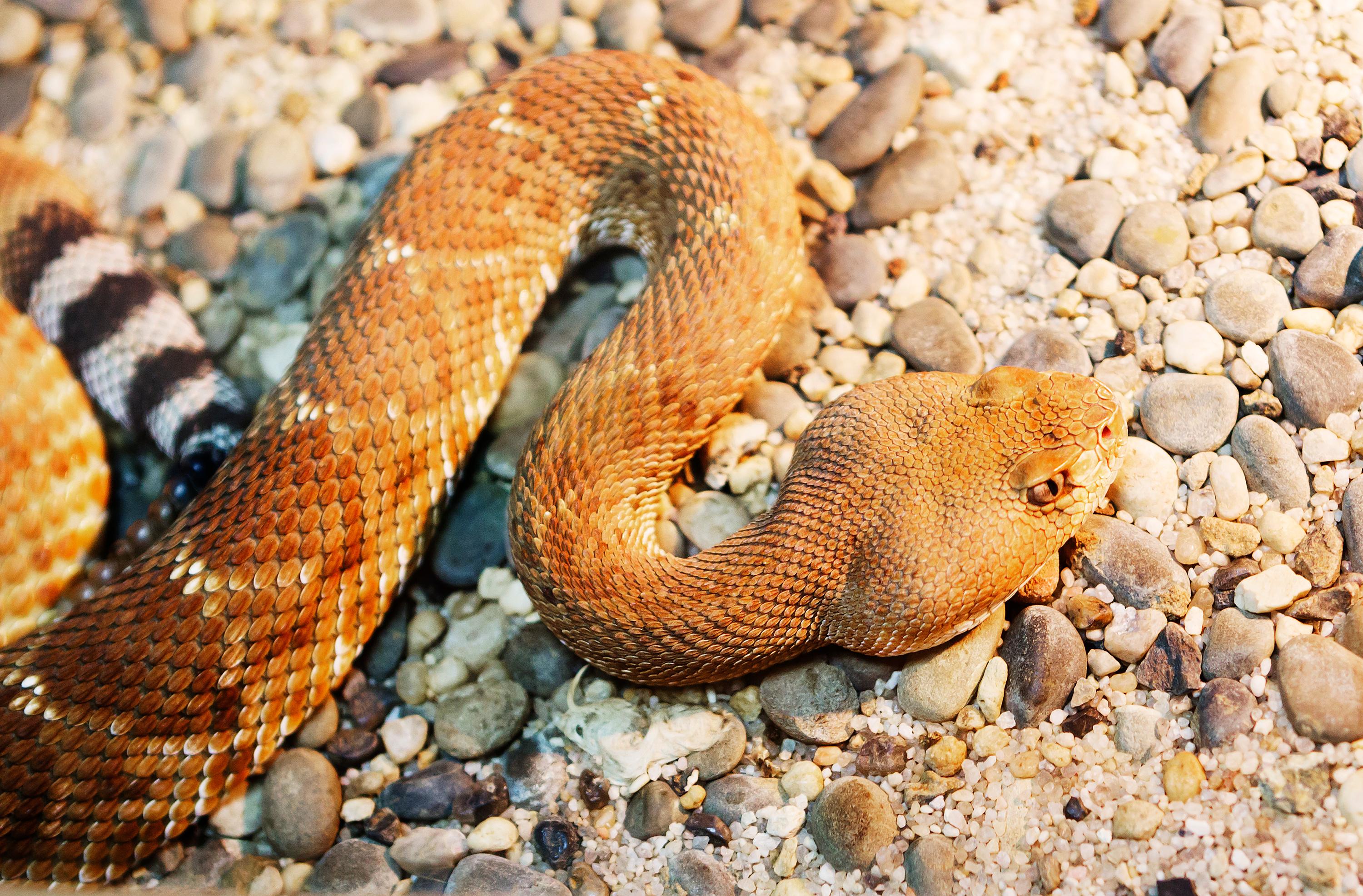
4 minute read
What Should You do if You Encounter a Wild Animal on the Trail? Part Four: Snakes
Series By: Duke Brady, Survivalist
Cover Photo: Southern Pacific Rattlesnake
Advertisement
Duke Brady is back for part four, and the final article of "What to do if you Encounter a Wild Animal on the Trail" and this time he is teaching us about snakes. Duke is an environmental scientist, backcountry guide, and part time TV survival expert. He has trekked and "scienced" from the arctic shores of Alaska to the sweltering jungles of the tropics. He has spent some quality time out in nature, joining the food chain with a bit more zeal than an average day hike.

Snakes on a Plain
Danger Noodles, Nope-Ropes, Slithery Sticks. Whatever you call them, snakes are amazing and adorable and you will never change my mind. Unfortunately for them, many people have phobias, fears, and a general lack of education about how to act around serpents and within their habitat. Justifiably, despite their admirable prowess ("look ma, no hands!") and cute nature, some are venomous enough to do bodily harm or death, therefore requiring us to hit the reptilian books before hitting the trail. And no, snakes are not poisonous; I've eaten plenty.

Red Diamondback Rattlesnake
Tip the Scales in Your Favor
Just like any other friendly fauna we've discussed in this series, knowing who you're dealing with will inform you of how to deal with them. Prerequisites for this include understanding where you are and what might live there. Here in the West, we can usually use the shape of a snake's head as diagnostic: Triangular shape, Watch your nape. And although I just made that saying up, it can be useful here in the Western United States, since rattlesnakes are fairly common, have said head shape, and are our only native venomous slithereen. To the untrained eye, many nonvenomous species may have the appearance of more caustic fellows; consider learning these differences as another "permit" to your wilderness experience. And although U.S. numbers of venomous snake bite deaths are low (around 5 deaths out of 7,500 bites annually), the more you know, the more you'll go. I think I just made that saying up as well.
No Fang You
Rattlesnakes are ambush predators, and can hunker in place for hours after finding a prey's den or suitable strike site. They're brilliant enough to manipulate vegetation for a better shot, but they wouldn't know to not strike an errant ankle that came stomping through its blind. Know where you're stepping, and if the other side of a log/rock/shrubbery may harbor a nice little snake stakeout. Rattlesnakes do actually rattle like crazy as a warning if cornered or threatened, and it's worth hearing that frightening cacophony from the comfort of your home before your next venture. April through October are typically when reptiles will be most active, and if you're East of the Rockies, you'll also have Copperheads, Cottonmouths, and Coral snakes to be aware of as well. The more you're in their prime season and habitat, the more vigilant you'll have to be.

Copperhead
Don't Gamble with Snake Eyes
Any snake bite should be scrutinized to determine your next steps. If you have been bit, it is critical to try and identify the snake, using all sight and sound evidence. Nonvenomous snake bites should follow protocol for local wound care, infection monitoring, and tetanus considerations. If you think or know you have been bitten by a rattlesnake, there's about a 25% chance it's a dry bite, with minimal or no venom disbursed. Regardless, all suspected rattlesnake bites should be treated as life threatening, and these next steps should be taken immediately:
-DO try and stay calm. Separate yourself from the animal and to safety, but have someone safely track it in order to obtain identifying data.
-DON'T try to "suck" out the venom, rub charred cow dung on it, cut an X into the bite area, or utilize those useless "hicky machines" that label themselves as Snake Bite Kits. They don't work, they just suck.
-DO immobilize the affected limb, but do not compress or constrict (NO TOURNAQUETS). If it's a leg/foot, that patient should be carried as much as possible.
-DO document as much as you can about the snake and its environment as well as progression of symptoms in the patient since envenomation.
-DO transport the patient to a hospital ASAP, and preferably one that you've confirmed has antivenin (call ahead or make this part of your pre-planning).
Side note on Dogs: All of the above rules apply to pooches, replacing Hospital with Emergency Veterinarian Clinic. Many will have antivenin, as dog envenomations are unfortunately commonplace. If you're an avid outdoors person who loves your dog, please consider Snake Aversion Training for your pet, and keep them on a leash until you are certain they can navigate snake territory safely.

Cottonmouth
Train the Pain Away
The only people that deserve to get bit by snakes are usually the ones whose parting phrase is "Check this out, hold my beer... " , but if you do find yourself in a sticky situation, try to keep your wits about you and remember what you've learned. In Wilderness Medicine, we train in mock scenarios to give ourselves a "cellular memory" and execute proper lifesaving procedures in auto-pilot, under extreme stress and adrenaline response. Wilderness First Responder and Wilderness First Aid training are a must in my book for everyone, even less avid hikers and campers; I've helped people with my training in urban settings more than in the wild. Visualize how you would deal with a snakebite situation, and do some of that pre planning in a fun and educational practice scenario. It may just save your life!

Western Diamondback Rattlesnake





